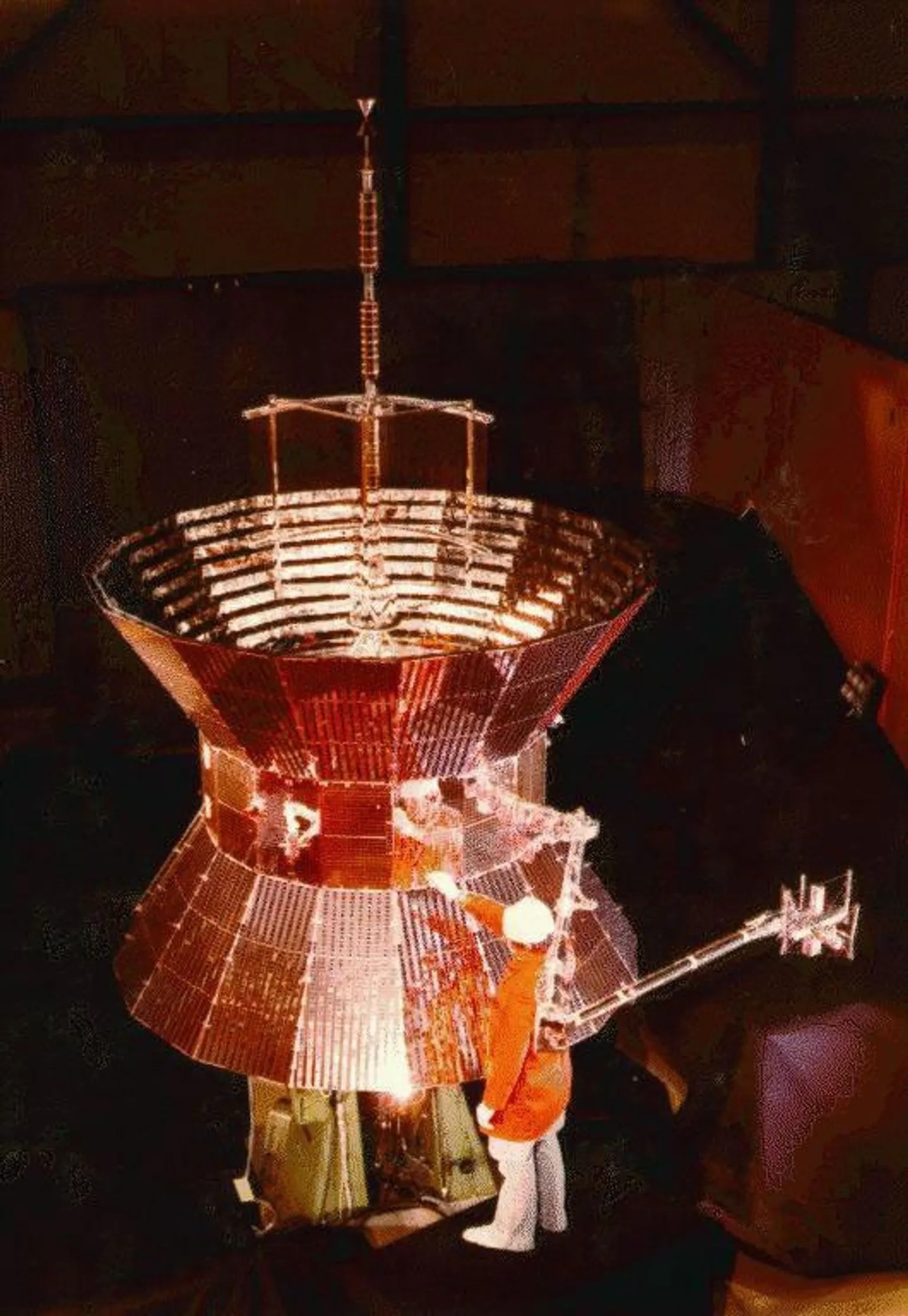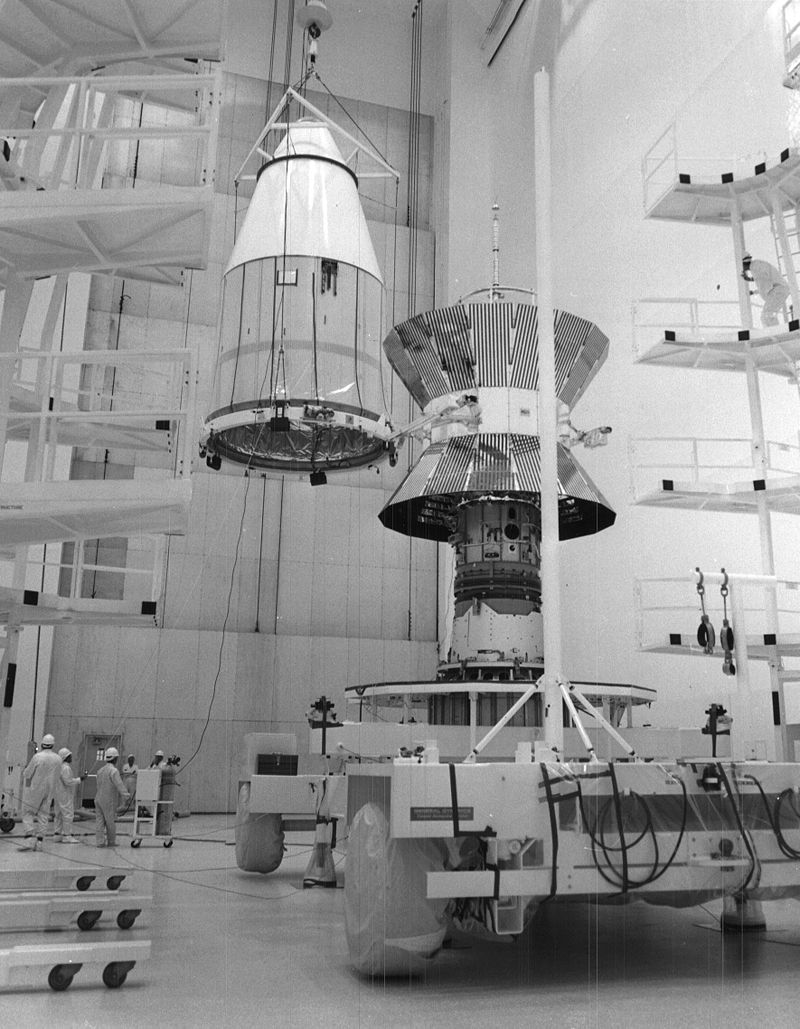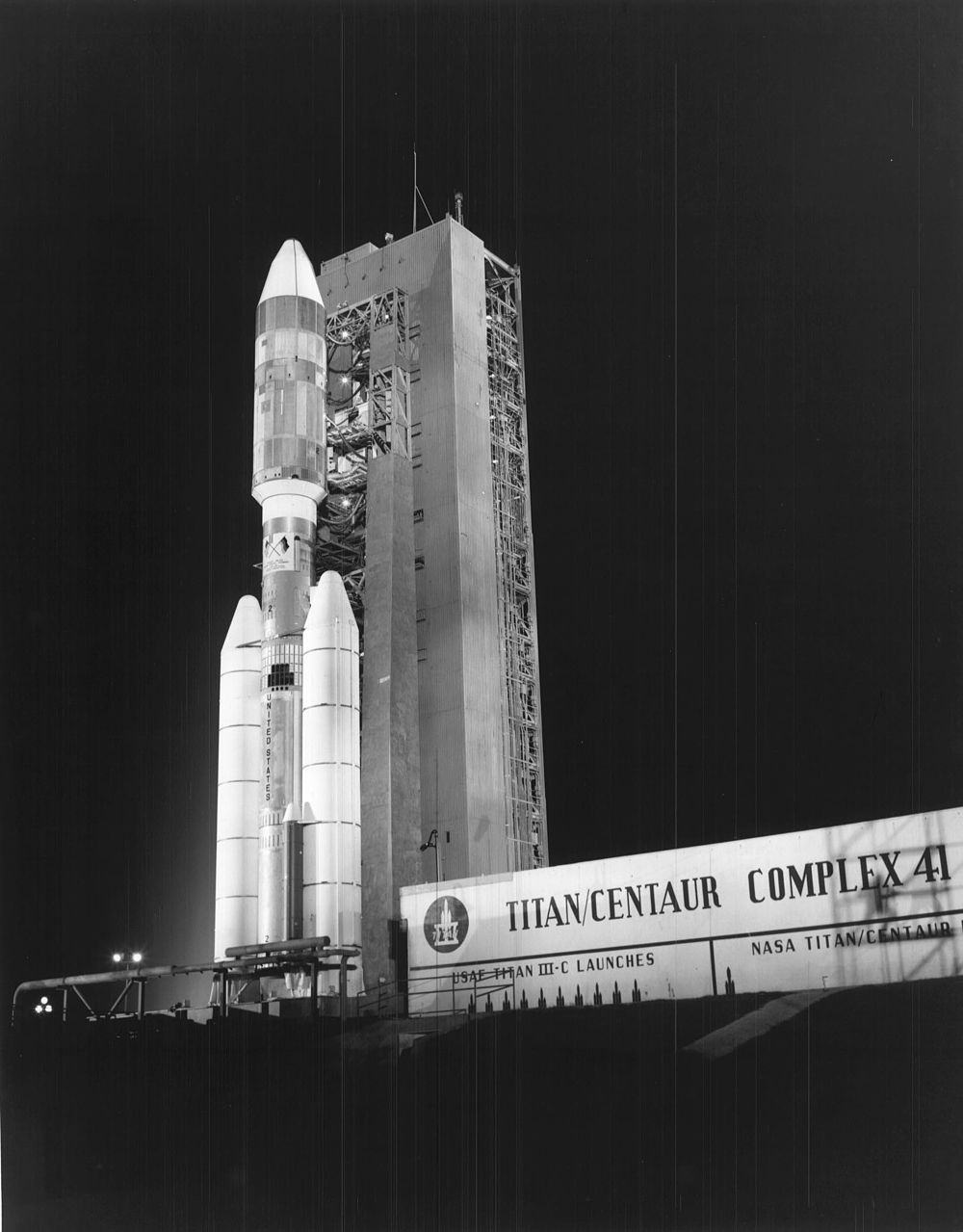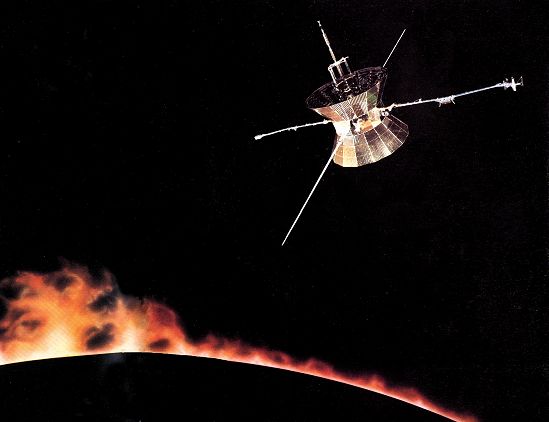The West German company Messerchmitt-Bölkow-Blohm built the two Helios probes, the first non-Soviet and non-American spacecraft placed in heliocentric orbit, for the West German space agency DFVLR, today’s DLR. Each 815-pound Helios probe carried 10 U.S. and West German instruments, weighing a total of 158 pounds, to study the Sun and its environment. The instruments included high-energy particle detectors to measure the solar wind, magnetometers to study the Sun’s magnetic field and variations in electric and magnetic waves, and micrometeoroid detectors. Once activated and checked out, operators in the German control center near Munich controlled the spacecraft and collected the raw data. To evenly distribute the solar radiation the spacecraft spun on its axis once every second, and optical mirrors on its surface reflected the majority of the heat.
Launch of Helios 1 took place at 2:11 a.m. EST Dec. 10, 1974, from Launch Complex 41 at Cape Canaveral Air Force, now Space Force, Station, on a Titan IIIE-Centaur rocket. This marked the first successful flight of this rocket, at the time the most powerful in the world, following the failure of the Centaur upper stage during the rocket’s inaugural launch on Feb. 11, 1974. The successful launch of Helios 1 provided confidence in the Titan IIIE-Centaur, needed to launch the Viking orbiters and landers to Mars in 1976 and the Mariner Jupiter-Saturn, later renamed Voyager, spacecraft in 1977 to begin their journeys through the outer solar system. The Centaur upper stage placed Helios 1 into a solar orbit with a period of 190 days, with its perihelion, or closest point to the Sun, well inside the orbit of Mercury. Engineers activated the spacecraft’s 10 instruments within a few days of launch, with the vehicle declared fully operational on Jan. 16, 1975. On March 15, Helios 1 reached its closest distance to the Sun of 28.9 million miles, closer than any other previous spacecraft – Mariner 10 held the previous record during its three Mercury encounters. Helios 1 also set a spacecraft speed record, traveling at 148,000 miles per hour at perihelion. Parts of the spacecraft reached a temperature of 261 degrees Fahrenheit, but the instruments continued to operate without problems. During its second perihelion on Sept. 21, temperatures reached 270 degrees, affecting the operation of some instruments. Helios 1 continued to operate and return useful data until both its primary and backup receivers failed and its high-gain antenna no longer pointed at Earth. Ground controllers deactivated the spacecraft on Feb. 18, 1985, with the last contact made on Feb. 10, 1986.
Helios 2 launched on Jan. 15, 1976, and followed a path similar to its predecessor’s but one that took it even closer to the Sun. On April 17, it approached to within 27 million miles of Sun, traveling at a new record of 150,000 miles per hour. At that distance, the spacecraft experienced 10% more solar heat than its predecessor. Helios 2’s downlink transmitter failed on March 3, 1980, resulting in no further useable data from the spacecraft. Controllers shut it down on Jan. 7, 1981. Scientists correlated data from the Helios instruments with similar data gathered by other spacecraft, such as the Interplanetary Monitoring Platform Explorers 47 and 50 in Earth orbit, the Pioneer solar orbiters, and Pioneer 10 and 11 in the outer solar system. In addition to their solar observations, Helios 1 and 2 studied the dust and ion tails of the comets C/1975V1 West, C/1978H1 Meier, and C/1979Y1 Bradfield. The information from the Helios probes greatly increased our knowledge of the Sun and its environment, and also raised more questions left for later spacecraft from unique vantage points to try to answer.
The joint ESA/NASA Ulysses mission studied the Sun from vantage points above its poles. After launch from space shuttle Discovery during STS-41 on Oct. 6, 1990, Ulysses used Jupiter’s gravity to swing it out of the ecliptic plane and fly first over the Sun’s south polar region from June to November 1994, then over the north polar region from June and September 1995. Ulysses continued its unique studies during several more polar passes until June 30, 2009, nearly 19 years after launch and more than four times its expected lifetime. NASA’s Parker Solar Probe, launched on Aug. 12, 2018, has made ever increasingly close passes to the Sun, including flying through its corona, breaking the distance record set by Helios 2. The Parker Solar Probe reached its first perihelion of 15 million miles on Nov. 5, 2018, with its closest approach of just 3.86 million miles of the Sun’s surface, just 4.5 percent of the Sun-Earth distance, planned for Dec. 24, 2024. The ESA Solar Orbiter launched on Feb. 10, 2020, and began science operations in November 2021. Its 10 instruments include cameras that have returned the highest resolution images of the Sun including its polar regions from as close as 26 million miles away.




